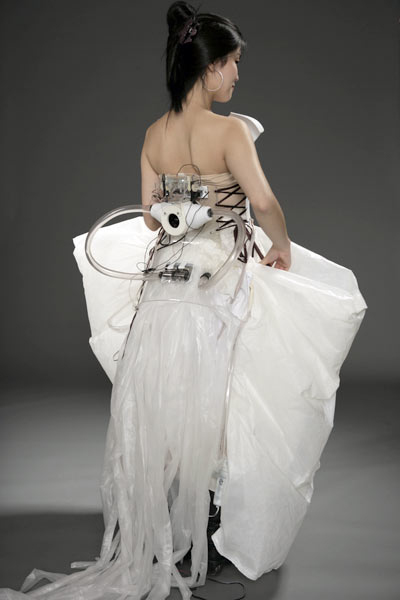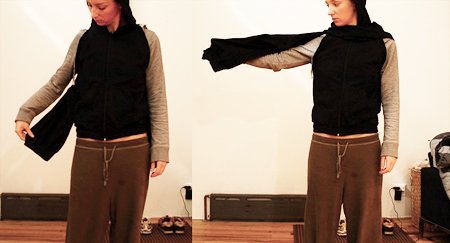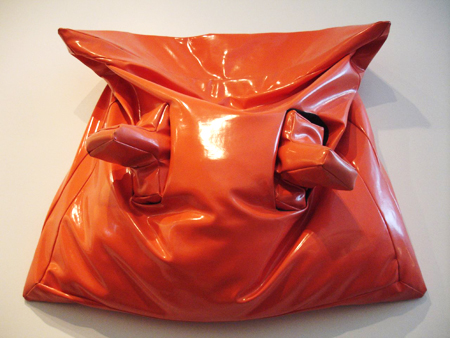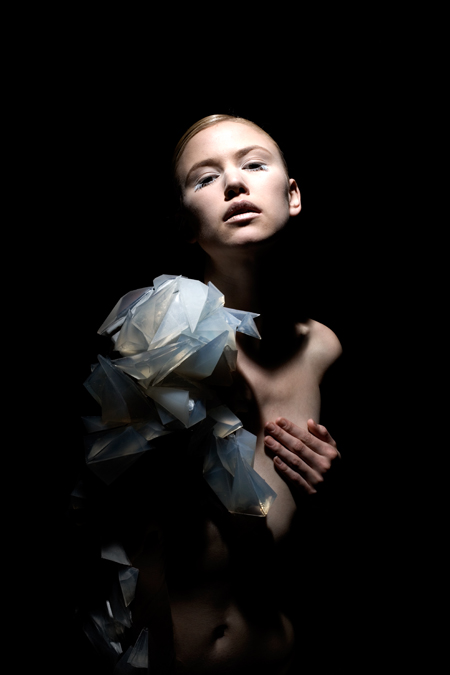 Philips Design has created yet another absolutely gorgeous wearable project for their Design Probes series called Fractal: Living Jewelry. Here's how they describe it:
Philips Design has created yet another absolutely gorgeous wearable project for their Design Probes series called Fractal: Living Jewelry. Here's how they describe it:
"Fractal is a stunning, figure-hugging outfit consisting entirely of huge imitation jewels augmented by pulsing LEDs. By incorporating sensors that measure movement, excitement levels and proximity of others - and using this input to alter the intensity of its integrated lighting - Fractal essentially becomes an extension of the body. It also serves as a platform for exploring emotional sensing. Unlike a cut and sewn garment, Fractal is made using product materials and processes. This opens up the possibility of ‘Hybrid’ forms and new functionalities in the search for solutions in the spaces of traditional apparel functionality - thermal protection, structure and support, water resistance, providing modesty, flesh control, and the ever-changing style calendars."
The geometric aesthetics makes me think of Mashallah Design and Linda Kostowski's digitally printed fashion, which I posted a couple months ago. The garments use an unfolding polygon method to generate the textile patterns.
Additional design probes from Philips include the beautiful Bubelle Blush dress and probes that explore the skin as the electronic platform.
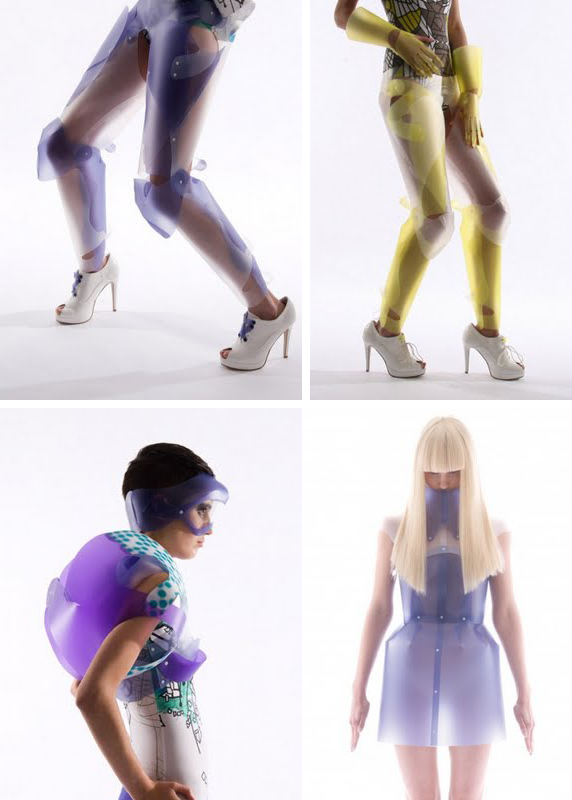 This collection was recently sent to me by my friends at n-ktr. This gorgeously functional, yet slightly unwearable collection called Plastic Analogue created by Amy Thompson instantly reminded me of an analog version of the wearable robotic device that Honda has been investigating. Each piece is mechanical, exposing the function, joints, and seams as the aesthetic centerpiece. What would happen if this type of aesthetic was applied to the work that Honda is doing?
This collection was recently sent to me by my friends at n-ktr. This gorgeously functional, yet slightly unwearable collection called Plastic Analogue created by Amy Thompson instantly reminded me of an analog version of the wearable robotic device that Honda has been investigating. Each piece is mechanical, exposing the function, joints, and seams as the aesthetic centerpiece. What would happen if this type of aesthetic was applied to the work that Honda is doing?